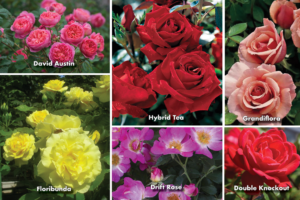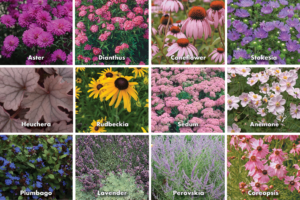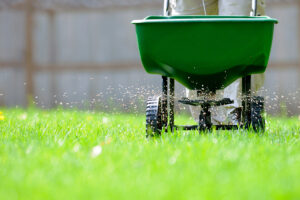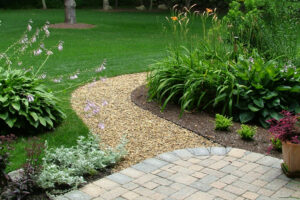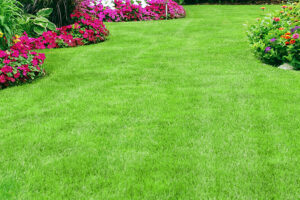As the summer heat subsides, fall is the perfect time to focus on lawn care and ensure a lush, green yard for the following spring. With cooler temperatures and increased rainfall, the grass can recover from the stresses of summer and prepare for winter. Following a seasonal plan for lawn maintenance and renovation will help you build a thick, healthy lawn that thrives year-round.
Early Fall (September): Start the Recovery Process
September marks the beginning of lawn recovery after the harsh summer months. This is the ideal time to give your grass the nutrients it needs to regain strength.
Lawn Maintenance:
Begin your fall lawn care routine by applying your first dose of Greensmart Lawn Food. This specialized fertilizer is formulated to provide the necessary nutrients to promote new growth and fortify your grass as it enters the cooler season. This early fall application is essential in helping your lawn recover and prepare for the months ahead.
Lawn Renovation:
Overseeding is crucial if your lawn suffers from drought or general wear and tear over the summer. Overseeding with Whitehouse Grass Seed or Shady Grass Seed Mix will fill in bare or thin areas, ensuring your lawn is dense and even. You can use an Overseeder or Slice Seeder to incorporate the new seeds into your lawn for the best results.
Spread seeding straw or Penn Mulch over the seeded areas to further protect your new seeds and encourage better germination. This layer protects the seed from the elements and birds while retaining moisture, vital for germination.
Mid Fall (October/November): The Most Critical Phase
By mid-fall, it’s time to focus on establishing a deep, vigorous root system that will sustain your lawn through the winter and into spring.
Lawn Maintenance:
Apply the second fall application of Greensmart Winterizer Lawn Food, a slow-release fertilizer that gradually feeds your lawn and encourages root development. This is the most important fertilization application of the season, as it builds new, thick roots that will support a healthy, dense lawn. Continue mowing your grass to maintain a height of 3-4 inches, which helps the grass absorb sunlight while preventing disease.
Lawn Renovation:
If any areas of your lawn are still struggling or patchy, you can overseed these areas again. Focus on achieving thick, full root systems in all bare spots. The goal is to have a consistent, even lawn by the time winter arrives.
Late Fall/Early Winter: Prepare for Dormancy
As temperatures drop, it’s time to focus on maintaining your lawn’s health during winter.
Lawn Maintenance:
Rake your lawn regularly to remove fallen leaves and debris. A lawn covered in leaves can suffocate, leading to dead patches when spring arrives. In late fall, apply Fast Lime to help maintain the ideal soil pH for your grass. Proper soil pH maximizes the effectiveness of fertilizers and keeps your lawn healthy. Next spring, you can also apply Gypsum Soil Conditioner to improve soil structure and enhance grass growth.
Lawn Renovation:
For any areas that remain thin or weak, continue to spot seed or overseed as needed. Surprisingly, grass seeded in December often performs better than grass seeded in March. This late-season seeding allows the grass to establish roots during winter dormancy and emerge strong in spring.
Fall lawn care is essential to achieving a lush, green yard in the following spring. Following these seasonal lawn maintenance and renovation steps, you’ll give your lawn the best chance to recover from summer stress, develop strong roots, and thrive when the weather warms up. With consistent attention throughout the fall, your lawn will reward you with a thick, healthy carpet of grass that lasts all year.



